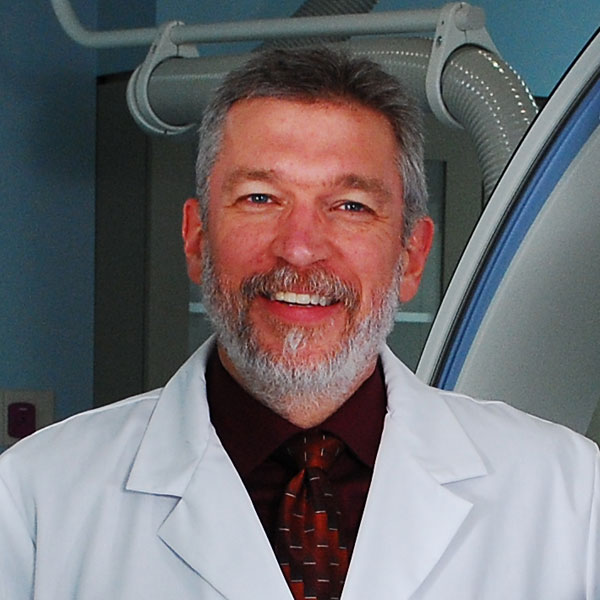Magnetic Resonance Imaging (MRI)
Magnetic resonance imaging (MRI) is a non-invasive imaging technology that uses a combination of a powerful magnetic field, radio waves, and a computer to produce detailed, three-dimensional (3D) pictures of the inside of your body. Many times, MRIs are able to give clearer insight into the internal structures of the body over other imaging methods.
MRI imaging can be very beneficial in evaluating:
- Organs of the chest and abdomen, including the heart, breasts, liver, kidneys, spleen, bowel, pancreas, and other soft tissue
- Pelvic organs such as the bladder, uterus, ovaries, and prostate
- Blood vessels
- Lymph nodes
- Infections
- Joint, bone, and muscle injuries
Most MRI machines are large, tube-shaped magnets that a patient enters for a short time while lying comfortably on an exam table. Unlike X-rays and CT scans, MRIs do not use radiation. Instead, a magnetic field temporarily realigns hydrogen atoms in your body. Radio waves then cause these aligned atoms to produce very faint signals, which are used to create cross-sectional MRI images, called slices.
Preparing for an MRI
During an exam, metal objects may interfere with the magnetic field, which can affect the quality of the images taken. Additionally, these objects can become projectiles within the MRI scanner room, resulting in harm to you or others who are nearby. If possible, leave jewelry and other accessories at home, otherwise, make sure you remove them prior to your scan. This includes items such as hairpins, eyeglasses, hearing aids, pocket knives, and removable dental work. You should also notify your technologist if you have or are:
- Any prosthetic joints, metal plates, pins, screws, or surgical staples
- Heart pacemaker, defibrillator, or artificial heart valve
- A bullet or shrapnel in your body
- Intrauterine device (IUD)
- Tattoos and/or permanent makeup
- Pregnant or potentially pregnant
MRI Locations
What is an MRI like?
Most MRI exams take less than 30 minutes, however, some could take longer depending on your specific study and the quality of the images. For clear pictures, you will be asked to relax and hold very still. To help make this possible, patients are usually given headphones or goggles for listening to music or watching TV. If claustrophobia is an issue, sedative medication or anesthesia may need to be administered. There are speakers and a call button inside the scanner, making it easy to maintain communication with the tech should any problems arise.
After the scan, a radiologist will analyze the results and create a report for your physician. Your physician will discuss the results with you and explain what they mean in relation to your health.
With state-of-the-art technology and physician expertise combined, Triad Radiology is able to perform advanced MRI applications that can help get answers regarding your health. Contact us today to learn more or schedule an appointment.



